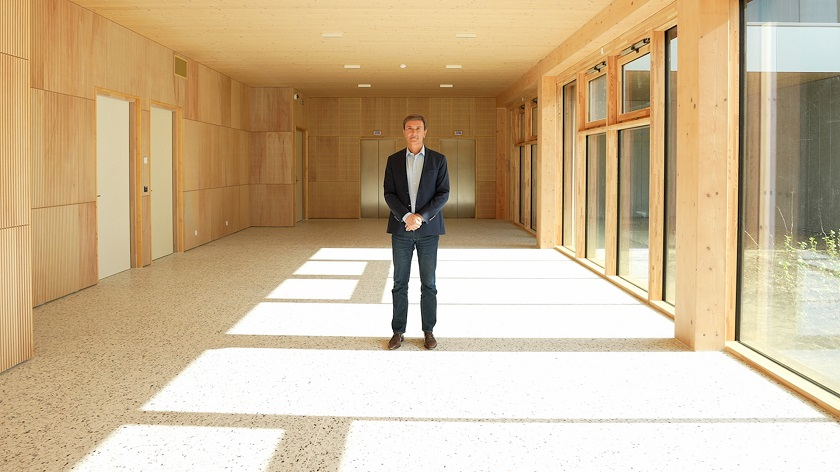When five industrial and technological champions join forces to develop software for an enriched and sustainable mobility offer for cities, regions, companies and citizens. François Dossa, open innovation projects director of Groupe Renault, explains the Software République.
Mobility has never evolved as fast as it has in recent years, with the diversification of business models, and offers in terms of connectivity, decarbonization and multimodality.
And we are only at the beginning. The global mobility market is expected to grow by 60% by 2035 to reach €11,000 billion1. How do we explain this growth? Mainly by the emergence of technological breakthroughs (electric vehicles, new components, new services, etc.), requiring the development of new software and systems.
"The Software République is a response to the profound changes in mobility." François Dossa, member of the Groupe Renault Management Committee in charge of Open Innovation Projects.
Competitiveness and sovereignty
The United States and China have already understood this and have embarked on enhanced integration strategies. These fall into two categories. On the one hand, there is Tesla's "vertical integration" strategy, with the ambition of controlling the entire core of the vehicle, including batteries and software. On the other hand, there are groups of Chinese automotive and technology companies engaged in horizontal integration strategies to offer competitive smart mobility solutions.
This is the context of the Software République, whose "objective is to structure a new development sector for software dedicated to mobility," says François Dossa. This horizontal integration strategy is a response both to Renault's competitiveness and, more broadly, to the need for France and Europe to build a sustainable ecosystem in this field.
"Software" and "République"
The Software République designates a group of partners representing each of the bricks or "skills" to develop software innovations for mobility. The partners include five founding members: Atos, Dassault Systèmes, Groupe Renault, STMicroelectronics and Thales. According to François Dossa, "These founding partners will provide the skills needed to develop technological and software innovations for mobility. The combination of all our skills will accelerate the implementation and marketing of these innovations.” The name "Software République" is self-evident:
Software, because it involves developing software in three main areas: vehicle systems, systems for mobility and energy ecosystems. All of this is based on key technological enablers such as artificial intelligence, cybersecurity, specialized electronics, big data and digital simulation.
République, to designate its functioning as an ecosystem. More precisely, it is an open innovation approach between complementary partners (large companies, start-ups, universities, research centers, public authorities, etc.) to co-develop new innovative solutions and new services.
Intelligent and sustainable mobility
Ultimately, these software and solutions developed within the Software République will be aimed at mobility service operators (private companies or public authorities), "enabling them to develop offers that facilitate accessibility to territories and improve the experience of citizens as well as energy management" explains François Dossa.
Among the first concrete examples of solutions under discussion with partners, "Plug&Charge" aims to simplify electric charging through the development of new technologies and services. This system will allow a car, plugged into any compatible charging station, to be recognized so that payment for the charge is made automatically. The Software République is also currently working on flow simulation to facilitate access to and exchange of mobility information, in an instantaneous and open way on a territorial scale, in order to provide solutions to improve traffic flow, reduce traffic jams, lost time and CO2 emissions.
https://projekt-renault.de/index.php/renault/news-renault/item/2429-welcome-to-the-software-republique?tmpl=component&print=1#sigProGalleriaf4b82f0a70
Source: Media Groupe Renault

